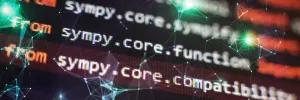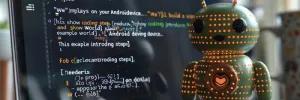Introduction
Python programming has been extremely popular in recent years as a result of its ease of use, adaptability, and readability. This comprehensive introduction to Python will explore the fundamentals of Python programming for beginners, including its capabilities, applications, and core concepts. Whether you are an expert developer looking to advance your skills or a novice programmer who is interested in Python, this post will provide you with insightful information on the language and history of Python.
Overview
Python is a dynamic, bytecode-compiled, and interpreted language. Variable, parameter, function, and method types are not declared in the source code. You sacrifice the source code's compile-time type verification but gain short, flexible code as a result.
Section | Description | Code Example |
Hello World Program | Basic program to print "Hello, World!" to introduce syntax and structure. | python<br>print("Hello, World!")<br> |
Variables and Data Types | Explanation of variables, data types (integers, floats, strings, booleans), and how to assign them. | python<br>x = 10<br>y = "Hello"<br> |
Basic Input/Output | How to take user input and display output. | python<br>name = input("Enter your name: ")<br>print("Hello, " + name)<br> |
Operators in Python | Explanation of arithmetic, comparison, logical, and assignment operators. | python<br>sum = 5 + 3<br>is_greater = 5 > 3<br> |
Conditional Statements | Introduction to if,elif, andelsestatements to perform conditional logic. | python<br>if x > y:<br> print("x is greater")<br> |
Loops in Python | Explanation of forandwhileloops to iterate over sequences and execute repetitive tasks. | python<br>for i in range(5):<br> print(i)<br> |
Functions in Python | Creating and using functions, with an introduction to parameters and return values. | python<br>def greet(name):<br> return "Hello " + name<br> |
Lists and Tuples | Explain the difference between lists (mutable) and tuples (immutable), and how to use them. | python<br>my_list = [1, 2, 3]<br>my_tuple = (1, 2, 3)<br> |
Dictionaries in Python | Introduction to dictionaries for key-value pair storage and access. | python<br>my_dict = {"name": "John", "age": 25}<br> |
Exception Handling | Explanation of try-except blocks to handle errors gracefully. | python<br>try:<br> x = 1 / 0<br>except ZeroDivisionError:<br> print("Cannot divide by zero")<br> |
File Handling | How to open, read, write, and close files in Python. | python<br>with open('file.txt', 'r') as file:<br> content = file.read()<br> |
Object-Oriented Programming (OOP) | Introduction to classes, objects, inheritance, and other OOP concepts in Python. | python<br>class Animal:<br> def __init__(self, name):<br> self.name = name<br> |
Modules and Packages | How to import and use external modules and packages. | python<br>import math<br>print(math.sqrt(16))<br> |
Common Libraries | Overview of popular Python libraries like NumPy, Pandas, Matplotlib, etc. | Example of importing and using a library |
What is Python?
Python is a high-level, interpreted programming language praised for its elegant syntax and usability. Python, which Guido van Rossum created and first made public in 1991, is currently one of the most widely used programming languages. The procedural, object-oriented, and functional programming paradigms are all supported. Python is a well-liked programming language for computers that is used to build websites and applications, automate procedures, and perform data analysis. Python is a multipurpose programming language that wasn't created to address any specific problem.
Python Programming Examples:
Example 1:
print("Hello, World!")
Output:
Hello World!
Example 2:
# Write to a file
with open('example.txt', 'w') as file:
file.write('Hello, this is an example.')
# Read from a file
with open('example.txt', 'r') as file:
content = file.read()
print(content)
Output:
Hello, this is an example.
Why Learn Python?
Python is highly versatile. You can use it for both small and complex tasks, and it is used across many different industries — from its more common applications in data science and software engineering to environments like mobile app development, artificial intelligence, and machine learning. Python's popularity results from a variety of benefits, including:
- Simplicity and Readability: Python is a great choice for novices because of its simple, accessible syntax. Less code is needed to convey a developer's ideas, increasing efficiency.
- Versatility: Python is a flexible language used in many different industries, such as web development, data research, artificial intelligence, scientific computing, and automation.
- Rich Standard Library: Python includes a sizable number of modules and libraries, which speed up development and ease complicated jobs.
- Community Support: The Python programming language has a thriving and helpful developer community that offers support through tutorials, forums, and contributions to open-source projects.
Getting Started with Python
Before diving into Python programming, you need to set up your development environment. Follow these steps to get started:
- Installation: Installing Python requires downloading the most recent version of your operating system from the official Python website. The website offers thorough installation instructions for several systems.
- Development environment integrated (IDE): To write and run your Python code, use an IDE like PyCharm, VSCode, or Jupyter Notebook. These IDEs have tools for project management, debugging, and code completion.
The Easiest Way to Run Python
- Download Thonny IDE.
- Run the installer to install Thonny on your computer.
- Go to: File > New. Then save the file with the .py extension.
- Write Python code in the file and save it. Running Python using Thonny IDE.
- Then Go to Run > Run current script or simply click F5 to run it.
Important Differences between Python 2.x and Python 3.x
Python 3 has an easier syntax compared to Python 2. A lot of libraries of Python 2 are not forward-compatible. A lot of libraries are created in Python 3 to be strictly used with Python 3. Python 2 is no longer in use since 2020. Python has undergone significant changes between versions 2. x and 3. x. Understanding these differences is crucial for writing compatible and efficient Python code. Here are some key disparities:
- Print Statement: In Python 2. x, the print statement is used without parentheses: print "Hello, World!". In Python 3. x, it is a function and requires parentheses: print("Hello, World!").
- Integer Division: In Python 2. x, the division between integers results in an integer: 5/2 equals 2. In Python 3. x, it results in a float: 5/2 equals 2.5.
Keywords in Python
Python Keywords are some predefined and reserved words in Python that have special meanings. Keywords are used to define the syntax of the coding. The keyword cannot be used as an identifier, function, or variable name. All the keywords in Python are written in lowercase except True and False. Python has a set of reserved words that serve as fundamental building blocks for programming. These keywords cannot be used as identifiers (variable names, function names, etc.). Here are some essential Python keywords:
- and
- as
- break
- class
- continue
- def
- if
- else
- for
- while
Namespaces and Scope in Python
A namespace is just a mapping from names to objects. A scope is a textual region of a Python program where a namespace is directly accessible. Each Python object has a scope that is the limit of its existence (and the point at which it cannot be accessed). Namespaces are storage areas for identifiers (variables, functions, classes, etc.) in the Python programming language. For creating modular and maintainable code, it is essential to comprehend namespaces and scope.
- Global Namespace: Contains identifiers that are accessible throughout the entire program.
- Local Namespace: Contains identifiers that are accessible within a specific function or code block.
- Built-in Namespace: Contains built-in functions and exceptions available in Python by default.
Python uses indentation to define blocks of code, eliminating the need for braces or other delimiters. Proper indentation is crucial for the readability and functionality of Python programs. Additionally, comments are used to provide explanations within the code for better understanding.
- Statements: A statement is a single line of code that performs a specific action. Python statements end with a newline character. A statement is a single line of code and is terminated by a new line. We can break up a statement into multiple lines with a \ (backslash). We can write multiple statements on one line if each statement is terminated by a ; (semicolon).
- Indentation: Python uses indentation to indicate blocks of code. The code's organization and readability depend on consistent indentation. The block of code that is a part of a specific control structure, such as a for loop or an if statement, is identified by indentation. Your code can provide notes and explanations by using comments.
- Comments: Comments are preceded by the # symbol and are ignored by the Python interpreter. They are useful for explaining code logic and making notes for developers. Lines of code in Python that are disregarded by the interpreter while the program is running are known as comments. Comments improve the readability of the code and aid programmers in thoroughly comprehending it. Python supports three different comment types: Comments on one line only. Several-line comments.
How to Check if a String is a Valid Keyword in Python?
You can determine if a string is a valid Python keyword using the keyword module. This module provides an in-built function iskeyword() that checks whether a given string is a reserved keyword in Python.
import keyword
word = "if"
if keyword.iskeyword(word):
print(f"{word} is a valid Python keyword.")
else:
print(f"{word} is not a valid Python keyword.")
Python Language Advantages and Applications
Python's simplicity, versatility, and extensive libraries make it suitable for various applications:
- Web Development: Python frameworks like Django and Flask enable rapid development of web applications.
- Python is frequently used for machine learning, data analysis, and visualization activities in data science. In the world of data research, tools like Pandas, NumPy, and scikit-learn are well-liked.
- Artificial Intelligence (AI) and Machine Learning (ML): Python is the recommended language for AI and ML projects because of its simplicity and stable ecosystem. Artificial Intelligence (AI) and Machine Learning (ML). The two most popular deep learning libraries are TensorFlow and PyTorch.
- Scientific Computing: Python is used in scientific research and computational simulations. Libraries like SciPy and SymPy facilitate scientific computations and symbolic mathematics.
- Automation and Scripting: Python scripts automate repetitive tasks, making it ideal for system administration, network automation, and scripting.
Advantages:
- Presence of third-party modules.
- Extensive support libraries(NumPy for numerical calculations, Pandas for data analytics, etc.)
- Open source and large active community base.
- Versatile, Easy to read, learn and write.
- User-friendly data structures.
- High-level language.
Conclusion
An effective and approachable way to enter the field of software development is through the use of Python programming. Both novice and seasoned developers will find it to be a fantastic choice due to its simplicity, readability, and versatility. Python offers the tools and resources to help you realize your ideas, whether you want to build web apps, investigate data science, or delve into artificial intelligence. Both structure-oriented and function-oriented programming are supported in Python. It has capabilities for managing dynamic memory that can use computing resources effectively. Additionally, it works with all widely used platforms and operating systems. As a result, all programmers can adopt this language.
FAQs
1. What are the key features of Python programming?
Simpleness, adaptability, readability, a robust standard library, and strong community support are some of Python's best qualities. It is the best option due to these characteristics for both novice and seasoned developers. Python has a wide range of features, some of which are covered below: Free and Open Source.Easy to code.Easy to Read.Object-Oriented Language.GUI Programming Support.High-Level Language.Large Community Support.Easy to Debug. Free and Open Source. Easy to code. Easy to Read. Object-Oriented Language. GUI Programming Support. High-Level Language. Large Community Support. Easy to Debug.
2. Can Python be used for web development?
Yes, a lot of people use Python to construct websites. Frameworks like Django and Flask provide a strong foundation for building dynamic and scalable online applications. Python's essential features make it a popular choice for web development. Python is accessible, open-source, and cost-free, to start. But more importantly, it is also very adaptable. Python makes it possible for web designers to use a range of different programming paradigms to create websites.
3. Is Python suitable for data science and machine learning?
Absolutely. Due to its vast selection of libraries, such as Pandas, NumPy, sci-kit-learn, TensorFlow, and PyTorch, Python is the favored language for projects requiring data science, machine learning, and artificial intelligence. To become a data scientist, you must study several of the best and most widely used programming languages, like Java, C , R, Python, etc. Python has long been regarded among data scientists all over the world as the best choice among these.
4. Python language used in which field?
Python is used extensively in various fields including web development, data science, artificial intelligence, scientific computing, automation, and more.
5. What type of language is python?
Python is a high-level, dynamically-typed, general-purpose programming language known for its readability and versatility.
6. What can I do with Python as a beginner?
As a beginner in Python, you can start by writing simple scripts, automate tasks, or explore data analysis and visualization
Take our Free Quiz on Python
Answer quick questions and assess your Python knowledge



-7f4b4f34e09d42bfa73b58f4a230cffa.webp&w=128&q=75)
-7f4b4f34e09d42bfa73b58f4a230cffa.webp&w=128&q=75)


























-ae8d039bbd2a41318308f8d26b52ac8f.svg)

-9cd0a42cab014b9e8d6d4c4ba3f27ab1.webp&w=3840&q=75)






